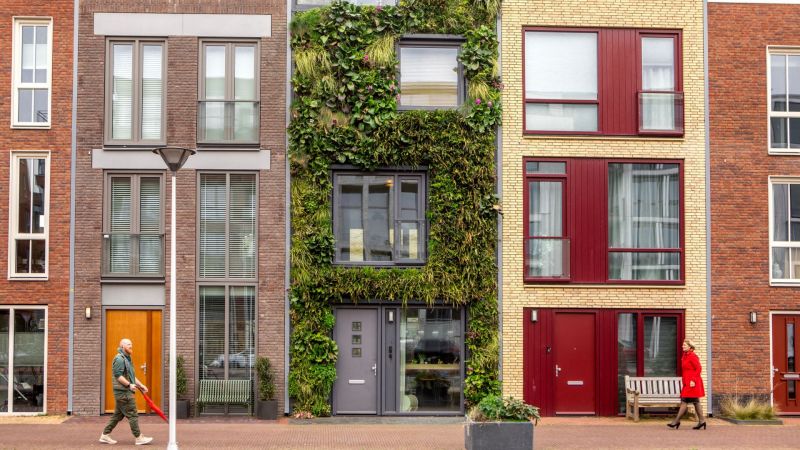House Sellers Take Their Green Label to the Bank
Properties with a good energy efficiency score command a premium unless they’re located where climate change skeptics abound

For many homeowners, climate change is seen through the lens of risk management. And for good reason: Extreme weather events can trigger costly damage from flooding, wildfires or freak storms, as well as higher insurance premiums and less favourable mortgage terms.
But climate change can also be seen through the lens of opportunity. It offers the chance to invest in energy-saving measures that burnish the value of a property when it comes time to sell.
A favourable energy efficiency score from EnerGuide, Energy Star or other certification bodies carries weight. You’ll notice it when shopping for appliances such as refrigerators, ranges, washing machines and other white goods. One study in China identified a 20 per cent premium on air conditioners that carried a green label. Energy premiums also exist for automobiles and, yes, houses.
Multiple studies have connected the Energy Star label (in the U.S.) and Energy Performance Certificates (in Europe) with higher residential sale prices and, to a lesser degree, rents. The size of the premium depends on the local housing market, specific energy efficiency features and other factors.
An analysis of house prices in the UK showed that consumers were willing to pay 3.4 per cent more for a home with an EPC rating. In the Netherlands, green labels commanded a 3.7 per cent premium. And a large national study in the U.S. found a 2.7 per cent average sales price premium for Energy Star-rated single-family homes.
A similar trend showed up in a comprehensive study conducted by Yuchen Lin, MSc'20, PhD'25, who is completing his PhD in finance at Smith School of Business. Lin built a broad dataset with U.S. residential sales prices and energy efficiency ratings from the Home Energy Rating System Index, covering the period from 1962 to 2021.

He found that houses with better energy performance ratings sold at a higher price than comparable properties. A 1 per cent increase in an energy efficiency score was associated with a 0.31 per cent to 1.7 per cent increase in house sale prices.
Given that his dataset included zip-code-level information, Lin could drill down for a geographically detailed analysis. This ground-level view showed that prevailing attitudes about climate change are a significant part of the story. All else being equal, he says, the green home premium is more substantial in regions where most residents are aware of climate change risk than in regions where skeptics abound. “The green premium still exists in non-believer areas,” he says, “but it’s notably smaller.”
Impact of mandatory labelling
Lin is now conducting a follow-up study to test the impact of mandatory energy efficiency labels on residential property sales. Anyone selling a house in Australia and many European countries, including the UK, must provide their property’s energy efficiency score alongside other real estate information. There is talk of making such labels mandatory for new and resale properties in some North American jurisdictions as well.
From studies to date, it’s unclear whether mandating an energy efficiency score has an additional impact on house sales over voluntary disclosure. One study of mandatory disclosure in Belgium showed a weak association between green labels and house prices. The mandatory policy, however, did encourage homeowners to invest in energy efficiency improvements.
According to other research in Germany, homeowners reduced their offer prices when forced to disclose energy efficiency information; this effect was particularly strong for owners who would not have voluntarily disclosed the information.
Lin is still conducting his follow-up study. But he says that if mandatory green labels were widely introduced in the North American residential real estate market, they would likely encourage property sellers to invest in energy-saving measures. Whether home buyers would be willing to pay a premium would likely hinge on attitudes to climate change.
“There would likely be larger impacts in environmentally concerned areas,” says Lin, “and weaker or possibly negligible effects in more skeptical regions.”





